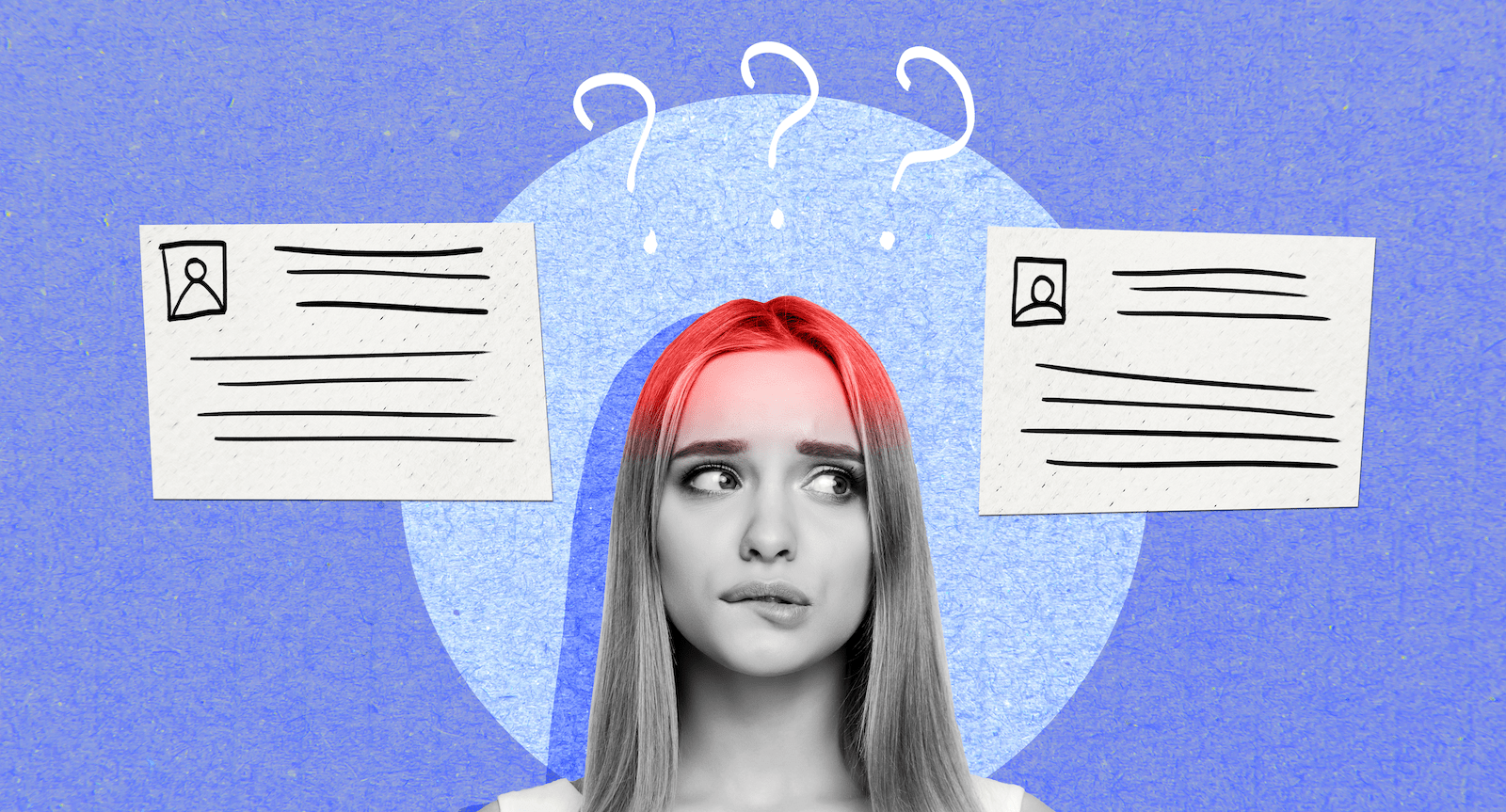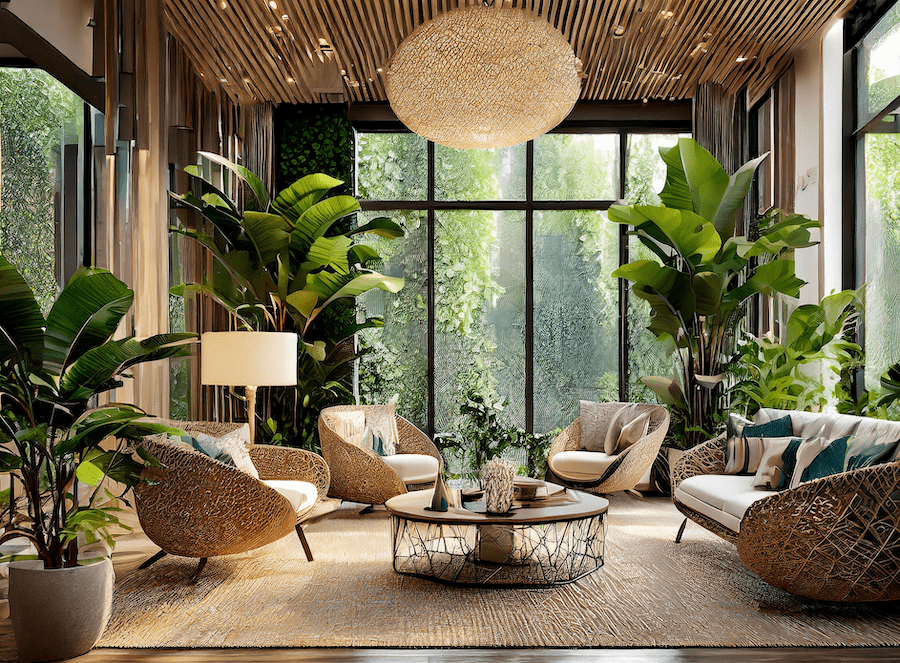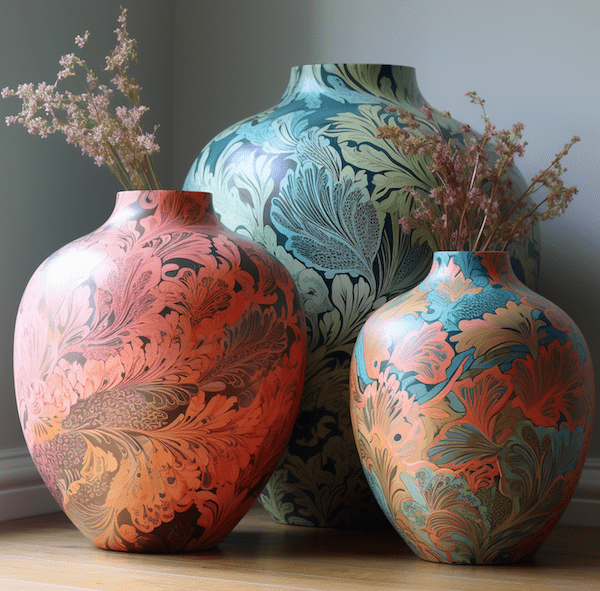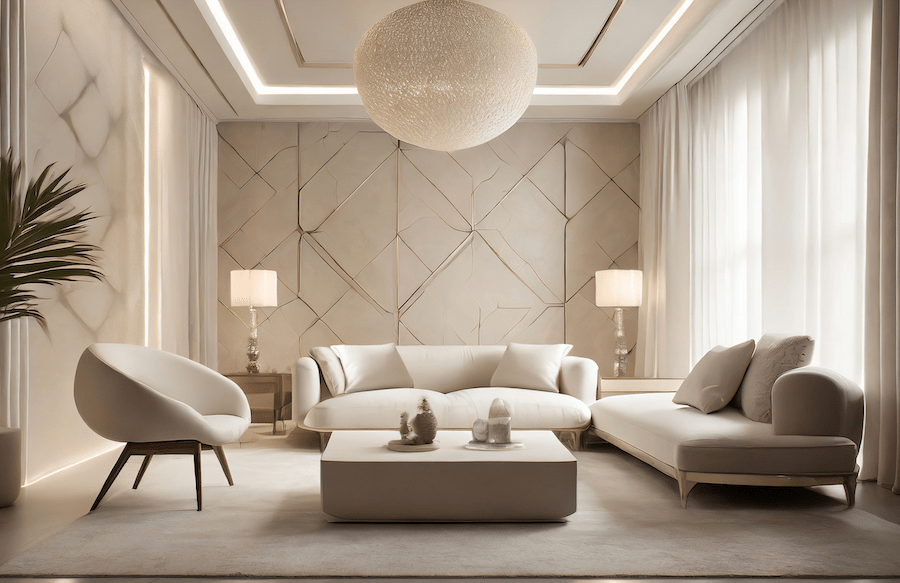Economic factors, especially during and after election years, have a significant impact on residential interior design trends. When uncertainty around the economy arises—like we often see after a major election—consumers naturally become more budget-conscious, which drives their design choices.
With rising inflation and housing costs, homeowners are looking for durable, versatile solutions that are both beautiful and comfortable and will also stand the test of time.
During these times we see a shift toward sustainable materials, such as recycled wood, natural fibers, and even innovative options like mushroom-based alternatives. These choices not only make homes more eco-friendly but also future proof them against the need for frequent updates.
At the same time, personalization and wellness are at the forefront of what homeowners are seeking. People are drawn to earthy tones and biophilic elements that create calm, comforting spaces that help reduce stress.
Today’s consumers crave environments that serve as sanctuaries, balancing both their emotional and physical well-being. Plants, natural light, and even soundproofing measures are becoming increasingly popular as people look for ways to bring the serenity of the outdoors inside.
It’s this mix of cost-conscious strategies, sustainability, and the use of neutral color palettes that’s really shaping how designers are responding to both the practical and emotional needs of homeowners.
RELATED
- Home Design Survey Reveals 4 Trends Driven by Rising Costs
- 2024 Election: Housing Takes Center Stage
- Design Trends: What Do DINKs Want in a Home?
Navigating Economic Fluctuations
The number of new residential projects tends to fluctuate following an election year, but that ultimately depends on the broader political and economic landscape. Post-election, there’s typically a period of uncertainty while new policies and market reactions settle. That uncertainty can make homeowners more cautious, holding off on major renovations or design projects until they have a clearer sense of how things like new tax laws, housing regulations, or interest rates will affect their personal finances.
For instance, when interest rates rise, homeowners may be more inclined to focus on small, impactful changes rather than full-scale remodels.
But there’s a silver lining. Economic uncertainty often sparks creativity. Something similar occurred during the pandemic when, despite a lot of economic uncertainty, people were spending a lot of time at home and wanted to make their living spaces more comfortable.
Rather than large-scale renovations, they opted for smaller, strategic updates that made a big difference, such as refreshing decor, adding calming elements, or upgrading lighting.
The introduction of wellness-focused design concepts helped people feel more at ease in their space, and it’s a trend that continues to gain traction.
From ‘Dupe Culture’ to Quality Investments
Whether homeowners choose to renovate or not, their perception of the economy undoubtedly influences their decisions as consumers, which in turn shapes design trends.
During times of uncertainty, we often see the rise of “dupe culture,” where people seek out budget-friendly alternatives to high-end goods. They want the look and feel of luxury but at a lower price point. Affordable replicas of iconic design pieces become popular, offering aspirational aesthetics at an approachable cost.
However, as the political and economic climate stabilizes, there’s often a shift back to investing in higher-quality, original products—especially those that promise durability and sustainability.
During these times, we see the trend of high-quality, sustainable materials really come into play. Homeowners are increasingly interested in knowing that their investments will stand the test of time, with minimal need for repairs or replacements.
In fact, right now we’re seeing a resurgence in interest in artisanal craftsmanship and bespoke design, which offers a level of customization and quality that mass-produced items can’t match.
The Power of Neutral Palettes and Tech-Driven Design
In an uncertain economy, there’s also a noticeable shift toward neutral color palettes. People crave stability in times of chaos, and that’s reflected in the way they design their homes.
Bold patterns and bright colors may feel fun when things are going well, but during uncertain times, homeowners gravitate toward more calming, neutral tones such as beige, gray, and warm whites.
These palettes not only offer emotional comfort but also provide flexibility if homeowners are thinking about selling their home. A neutral aesthetic appeals to a broader range of buyers, giving potential owners a blank canvas on which to make minimal adjustments over time.
Another important aspect influencing modern interior design is technology. As we move into an increasingly tech-driven world, homeowners are also embracing smart home features such as automated lighting, climate control, and AI-powered design tools.
These innovations make homes more efficient and offer long-term value while providing that same level of customization and personalization.
AI-powered software is now helping homeowners and designers visualize spaces in real-time, streamlining the decision-making process while allowing for more creativity with minimal risk.
Ultimately, the economy and the general mood of the country following an election year are some of the strongest indicators for residential interior design trends.
When things are uncertain, homeowners prioritize practicality, durability, and functionality. They make thoughtful investments in high-quality, sustainable materials that enhance their day-to-day life while adding long-term value to their homes.
At the same time, wellness-driven design continues to grow, as people seek calm and comfort in their personal spaces. Biophilic elements, neutral palettes, and tech-enhanced efficiency offer both emotional and practical benefits in times of uncertainty.
Whether the political and economic landscape is fluctuating or stabilizing, homeowners will continue to seek out designs that support their well-being and offer value for years to come.
Stacy Garcia is the CEO and chief inspiration officer at Stacy Garcia Design Studio, in Nanuet, N.Y. She has more than 25 years’ experience in licensing, design, branding, product development, color forecasting, trend forecasting, textile sourcing and development, textile design, and lifestyle design.










